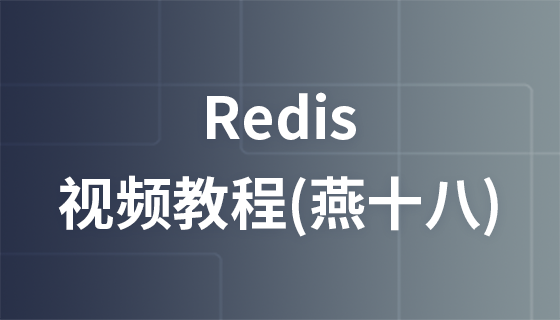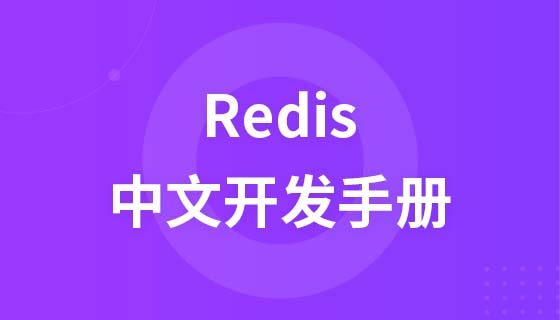redis 的基本操作方法
1 redis 的连接 :
//实例化redis
$redis = new Redis();
//连接
$redis->connect('127.0.0.1', 6379);
//检测是否连接成功
echo "Server is running: " . $redis->ping();
// 输出结果 Server is running: +PONG2 redis 操作 Strng (字符串):
// 设置一个字符串的值
$redis->set('cat', 111);
//获取一个字符串的值
echo $redis->get('cat'); // 111
// 重复set
$redis->set('cat', 222);
echo $redis->get('cat'); // 2223 redis 操作 List (列表):
//存储数据到列表中
$redis->lpush('list', 'html');
$redis->lpush('list', 'css');
$redis->lpush('list', 'php');
//获取列表中所有的值
$list = $redis->lrange('list', 0, -1);
print_r($list);echo '<br>';
// Array ( [0] => php [1] => css [2] => html )
//从右侧加入一个
$redis->rpush('list', 'mysql');
$list = $redis->lrange('list', 0, -1);
print_r($list);echo '<br>';
// Array ( [0] => php [1] => css [2] => html [3] => mysql )
//从左侧弹出一个
$redis->lpop('list');
$list = $redis->lrange('list', 0, -1);
print_r($list);echo '<br>';
// Array ( [0] => css [1] => html [2] => mysql )
//从右侧弹出一个
$redis->rpop('list');
$list = $redis->lrange('list', 0, -1);
print_r($list);echo '<br>';
// Array ( [0] => css [1] => html )4 redis 操作 Hash (字典):
立即学习“PHP免费学习笔记(深入)”;
<?php
//实例化redis
$redis = new Redis();
//连接
$redis->connect('127.0.0.1', 6379);
//字典
//给hash表中某个key设置value
//如果没有则设置成功,返回1,如果存在会替换原有的值,返回0,失败返回0
echo $redis->hset('hash', 'cat', 'cat');echo '<br>'; // 1
echo $redis->hset('hash', 'cat', 'cat');echo '<br>'; // 0
echo $redis->hset('hash', 'cat', 'cat1');echo '<br>'; // 0
echo $redis->hset('hash', 'dog', 'dog');echo '<br>'; // 1
echo $redis->hset('hash', 'bird', 'bird');echo '<br>'; // 1
echo $redis->hset('hash', 'monkey', 'monkey');echo '<br>'; // 1
//获取hash中某个key的值
echo $redis->hget('hash', 'cat');echo '<br>'; // cat1
//获取hash中所有的keys
$arr = $redis->hkeys('hash');
print_r($arr);echo '<br>';
// Array ( [0] => cat [1] => dog [2] => bird [3] => monkey )
//获取hash中所有的值 顺序是随机的
$arr = $redis->hvals('hash');
print_r($arr);echo '<br>';
// Array ( [0] => cat1 [1] => dog [2] => bird [3] => monkey )
//获取一个hash中所有的key和value 顺序是随机的
$arr = $redis->hgetall('hash');
print_r($arr);echo '<br>';
// Array ( [cat] => cat1 [dog] => dog [bird] => bird [monkey] => monkey )
//获取hash中key的数量
echo $redis->hlen('hash');echo '<br>';
// 4
//删除hash中一个key 如果表不存在或key不存在则返回false
echo $redis->hdel('hash', 'dog');echo '<br>';
var_dump($redis->hdel('hash', 'rabbit'));echo '<br>';
// 1
// int(0)5 redis 操作 Set (集合):
<?php
//实例化redis
$redis = new Redis();
//连接
$redis->connect('127.0.0.1', 6379);
//集合
// 添加一个元素
echo $redis->sadd('set', 'cat');echo '<br>'; // 1
echo $redis->sadd('set', 'cat');echo '<br>'; // 0
echo $redis->sadd('set', 'dog');echo '<br>'; // 1
echo $redis->sadd('set', 'rabbit');echo '<br>'; // 1
echo $redis->sadd('set', 'bear');echo '<br>'; // 1
echo $redis->sadd('set', 'horse');echo '<br>'; // 1
// 查看集合中所有的元素
$set = $redis->smembers('set');
print_r($set);echo '<br>';
// Array ( [0] => rabbit [1] => cat [2] => bear [3] => dog [4] => horse )
//删除集合中的value
echo $redis->srem('set', 'cat');echo '<br>'; // 1
var_dump($redis->srem('set', 'bird'));echo '<br>'; // int(0)
$set = $redis->smembers('set');
print_r($set);echo '<br>';
// Array ( [0] => dog [1] => rabbit [2] => horse [3] => bear )
//判断元素是否是set的成员
var_dump($redis->sismember('set', 'dog'));echo '<br>'; // bool(true)
var_dump($redis->sismember('set', 'bird'));echo '<br>'; // bool(false)
//查看集合中成员的数量
echo $redis->scard('set');echo '<br>'; // 4
//移除并返回集合中的一个随机元素(返回被移除的元素)
echo $redis->spop('set');echo '<br>'; // bear
print_r($redis->smembers('set'));echo '<br>';
// Array ( [0] => dog [1] => rabbit [2] => horse )
<?php
//实例化redis
$redis = new Redis();
//连接
$redis->connect('127.0.0.1', 6379);
//集合
$redis->sadd('set', 'horse');
$redis->sadd('set', 'cat');
$redis->sadd('set', 'dog');
$redis->sadd('set', 'bird');
$redis->sadd('set2', 'fish');
$redis->sadd('set2', 'dog');
$redis->sadd('set2', 'bird');
print_r($redis->smembers('set'));echo '<br>';
// Array ( [0] => cat [1] => dog [2] => bird [3] => horse )
print_r($redis->smembers('set2'));echo '<br>';
// Array ( [0] => bird [1] => dog [2] => fish )
//返回集合的交集
print_r($redis->sinter('set', 'set2'));echo '<br>';
// Array ( [0] => dog [1] => bird )
//执行交集操作 并结果放到一个集合中
$redis->sinterstore('output', 'set', 'set2');
print_r($redis->smembers('output'));echo '<br>';
// Array ( [0] => dog [1] => bird )
//返回集合的并集
print_r($redis->sunion('set', 'set2'));echo '<br>';
// Array ( [0] => cat [1] => dog [2] => bird [3] => horse [4] => fish )
//执行并集操作 并结果放到一个集合中
$redis->sunionstore('output', 'set', 'set2');
print_r($redis->smembers('output'));echo '<br>';
// Array ( [0] => cat [1] => dog [2] => bird [3] => horse [4] => fish )
//返回集合的差集
print_r($redis->sdiff('set', 'set2'));echo '<br>';
// Array ( [0] => horse [1] => cat )
//执行差集操作 并结果放到一个集合中
$redis->sdiffstore('output', 'set', 'set2');
print_r($redis->smembers('output'));echo '<br>';
// Array ( [0] => horse [1] => cat )6 redis 操作 Sorted Set (有序集合):
<?php
//实例化redis
$redis = new Redis();
//连接
$redis->connect('127.0.0.1', 6379);
//有序集合
//添加元素 分数
echo $redis->zadd('set', 1, 'cat');echo '<br>'; // 1
echo $redis->zadd('set', 2, 'dog');echo '<br>'; // 1
echo $redis->zadd('set', 3, 'fish');echo '<br>'; // 1
echo $redis->zadd('set', 4, 'dog');echo '<br>'; // 0
echo $redis->zadd('set', 4, 'bird');echo '<br>'; // 1
//返回集合中的所有元素
print_r($redis->zrange('set', 0, -1));echo '<br>';
// Array ( [0] => cat [1] => fish [2] => bird [3] => dog )
print_r($redis->zrange('set', 0, -1, true));echo '<br>';
// Array ( [cat] => 1 [fish] => 3 [bird] => 4 [dog] => 4 )
//返回元素的score值
echo $redis->zscore('set', 'dog');echo '<br>';
// 4
//返回存储的个数
echo $redis->zcard('set');echo '<br>';
// 4
//删除指定成员
$redis->zrem('set', 'cat');
print_r($redis->zrange('set', 0, -1));echo '<br>';
// Array ( [0] => fish [1] => bird [2] => dog )
//返回集合中介于min和max之间的值的个数
print_r($redis->zcount('set', 3, 5));echo '<br>';
// 3
//返回有序集合中score介于min和max之间的值
print_r($redis->zrangebyscore('set', 3, 5));echo '<br>';
// Array ( [0] => fish [1] => bird [2] => dog )
print_r($redis->zrangebyscore('set', 3, 5, ['withscores'=>true]));echo '<br>';
// Array ( [fish] => 3 [bird] => 4 [dog] => 4 )
//返回集合中指定区间内所有的值 倒叙
print_r($redis->zrevrange('set', 1, 2));echo '<br>';
// Array ( [0] => bird [1] => fish )
print_r($redis->zrevrange('set', 1, 2, true));echo '<br>';
// Array ( [bird] => 4 [fish] => 3 )
//有序集合中指定值的socre增加
echo $redis->zscore('set', 'dog');echo '<br>';
// 4
$redis->zincrby('set', 2, 'dog');
echo $redis->zscore('set', 'dog');echo '<br>';
// 6
//移除score值介于min和max之间的元素
print_r($redis->zrange('set', 0, -1, true));echo '<br>';
// Array ( [fish] => 3 [bird] => 4 [dog] => 6 )
print_r($redis->zremrangebyscore('set', 3, 4));echo '<br>';
// 2
print_r($redis->zrange('set', 0, -1, true));echo '<br>';
// Array ( [dog] => 6 )
//结果以上就是PHP操作Redis的基本方法的详细内容,更多请关注php中文网其它相关文章!

PHP怎么学习?PHP怎么入门?PHP在哪学?PHP怎么学才快?不用担心,这里为大家提供了PHP速学教程(入门到精通),有需要的小伙伴保存下载就能学习啦!




Copyright 2014-2025 https://www.php.cn/ All Rights Reserved | php.cn | 湘ICP备2023035733号